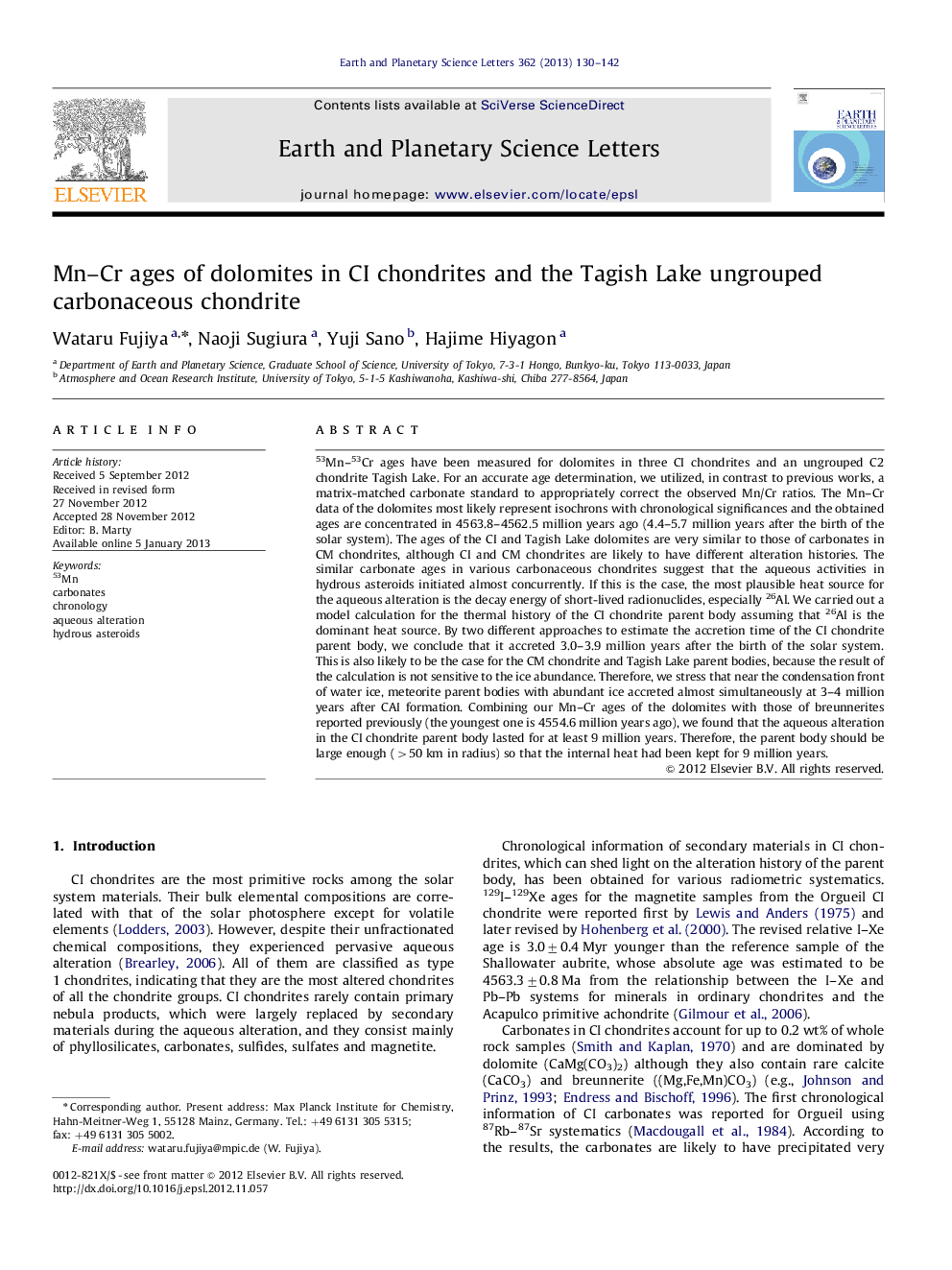| Article ID | Journal | Published Year | Pages | File Type |
|---|---|---|---|---|
| 4677251 | Earth and Planetary Science Letters | 2013 | 13 Pages |
53Mn–53Cr ages have been measured for dolomites in three CI chondrites and an ungrouped C2 chondrite Tagish Lake. For an accurate age determination, we utilized, in contrast to previous works, a matrix-matched carbonate standard to appropriately correct the observed Mn/Cr ratios. The Mn–Cr data of the dolomites most likely represent isochrons with chronological significances and the obtained ages are concentrated in 4563.8–4562.5 million years ago (4.4–5.7 million years after the birth of the solar system). The ages of the CI and Tagish Lake dolomites are very similar to those of carbonates in CM chondrites, although CI and CM chondrites are likely to have different alteration histories. The similar carbonate ages in various carbonaceous chondrites suggest that the aqueous activities in hydrous asteroids initiated almost concurrently. If this is the case, the most plausible heat source for the aqueous alteration is the decay energy of short-lived radionuclides, especially 26Al. We carried out a model calculation for the thermal history of the CI chondrite parent body assuming that 26Al is the dominant heat source. By two different approaches to estimate the accretion time of the CI chondrite parent body, we conclude that it accreted 3.0–3.9 million years after the birth of the solar system. This is also likely to be the case for the CM chondrite and Tagish Lake parent bodies, because the result of the calculation is not sensitive to the ice abundance. Therefore, we stress that near the condensation front of water ice, meteorite parent bodies with abundant ice accreted almost simultaneously at 3–4 million years after CAI formation. Combining our Mn–Cr ages of the dolomites with those of breunnerites reported previously (the youngest one is 4554.6 million years ago), we found that the aqueous alteration in the CI chondrite parent body lasted for at least 9 million years. Therefore, the parent body should be large enough (>50 km in radius) so that the internal heat had been kept for 9 million years.
► Mn–Cr ages of dolomites in CI chondrites and Tagish Lake are approximately 4563 Ma. ► Ages of the CI dolomites are similar to those of CM carbonates. ► The parent bodies of CI, CM chondrites and Tagish Lake accreted concurrently.
